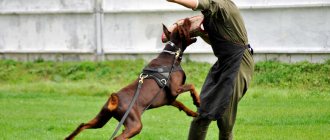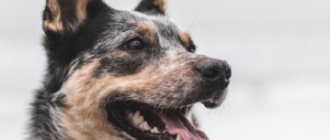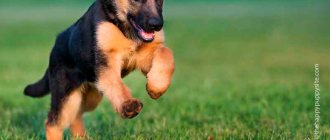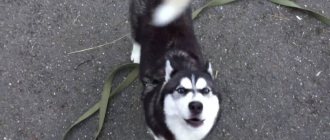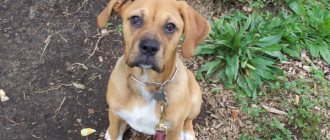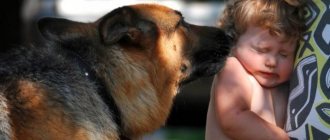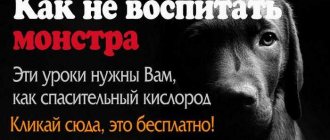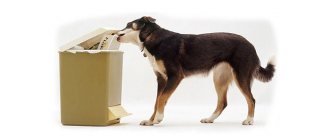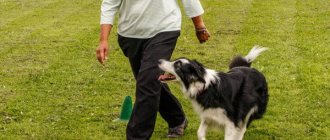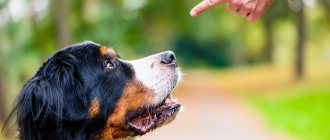- Start of classes: when
- Exhibition condition
- Handling
- Group exercise and loads
- Grooming
- Typical mistakes made by inexperienced breeders/owners
Sinitsina I.A. owner of the “Dear Pleasure” kennel, chairman of the “Cat and Dog” club, Novosibirsk
What makes up a dog’s successful exhibition career? First of all, from competitive exterior data, the “stellar” character of the future champion and proper exhibition preparation . A potential star in the ring may flicker away from exhibitions or go out altogether if the owner does not help realize this potential. Here are some useful tips to help those who are at the beginning of the exhibition journey with their pet.
Start of classes: when
The puppy makes its first appearance in the baby class (at the age of 3 to 6 months). Therefore, babies begin to prepare for the first exhibition at 1.5–2 months, practically still in the breeder’s house.
Can show abilities show up at such an early age? Yes. A breeder who breeds professionally very carefully monitors the development of puppies and their behavior. For example, when babies are photographed to put the litter up for sale, we try to put them in the right position, and here we can already see who easily agrees to participate in the new fun, and who resists. Puppies are pliable, easy-going, and quickly grasp the rules of the “game.” They are pleased with the attention of others and love to show off. An experienced dog breeder can already point out among the “babies” those who will enjoy going to shows, because in order to prepare a show dog, it is the puppy’s interest that is important, so that he has temperament and courage. Some dogs even stand on a pedestal, expressing with all their appearance: look what a star I am! Your task is to organize exhibition training for your pet in such a way that it retains its interest and drive.
The complex, briefly called “preparing for an exhibition,” includes maintaining proper exhibition condition, accustoming to showing (handling) in a mass show, and accustoming to grooming.
What should a dog look like to be allowed to participate in an exhibition?
Dogs that are healthy, not fat or emaciated, with properly developed muscles and with tidy coat are allowed to participate in the exhibition. Representatives of some breeds also require a visit to a groomer the day before, who will tidy up the dog's coat in accordance with show breed standards. If you do not have such experience, then it is better not to experiment on an animal and entrust its appearance to professionals. By the way, it is better to make an appointment with the groomer in advance, since more than one of your dogs is taking part in the exhibition. It is advisable to visit him 3-4 months before the start of the exhibition and ask him to recommend appropriate grooming products for you, and also to give your pet a training haircut. Well, your second visit should be on the eve of the exhibition, 3-5 days before this important event.
Exhibition condition
In my opinion, a puppy should be a little more well-fed than an adult dog. But when raising large dogs today, they try to avoid excess weight so that there is no unnecessary stress on the ligaments and joints. Each breed has its own age-specific “ideal” of fatness, and an expert who is well versed in its characteristics can correctly assess a puppy’s condition. You are required to provide your pet with adequate nutrition and physical exercise so that the puppy develops according to age and breed criteria. To the traditional question of which food is better, I will answer: the one on which the puppy grows well and feels great.
Problems begin when the dog’s diet suddenly changes dramatically.
Many of my dogs eat PEDIGREE® all their lives: they start with the first food, then move on to puppy food, then to adult dog food. The food has been on our market for a long time, is always available in stores, and can be safely recommended to those who have purchased a puppy from you. And if we take the financial aspect, a large number of families can afford to raise a dog on this particular line of food. PEDIGREE® provides excellent condition and I am very happy with the price/quality ratio.
Problems begin when the dog’s diet suddenly changes dramatically. Individual characteristics really exist. Objectively, more expensive food should have premium qualities, but subjectively the body may not appreciate this and give an undesirable reaction to some tertiary component. Feed the puppy what he is accustomed to from the breeder. Moreover, do not change food suddenly on the eve of the exhibition.
Mental preparation of a dog for participation in exhibitions
The dog must be well-mannered
What is a dog's character? In fact, this is nothing more than a trait that is inherited by an animal. Yes, the character of an animal can acquire new features, however, its basis is what it inherited from its parents. Therefore, if you see a dog that is stubborn, stupid, greedy, neurotic and hysterical - all this is the “baggage” that its parents passed on to it. And, before you get a dog, and you have already decided for yourself that you want it to participate in exhibitions, be sure to find out as much information as possible about the puppy’s parents, or even better, watch their behavior for several hours, and only after that choose a pet with good psychological data. Does this type of character suit you? If yes, then feel free to take a puppy - everything basic is already laid in it. If not, you are unlikely to be able to break your character, therefore, do not torture yourself or the dog.
So, what is the ideal psychological portrait of a show dog? She has a strong nervous system, has innate contact, and shows interest in the world around her. These inclinations will need to be cultivated and developed in her. Since they will help ensure that she has every chance of success in the ring.
How to raise a show dog?
- Teach your puppy to react correctly to objects and living objects that surround him.
- Walks must be on a leash only.
- The dog should not be afraid of loud noises.
- Prohibit the animal from showing aggression and interest towards other animals. The optimal attitude is indifferent, not friendly.
- The dog must get used to traveling by transport; they should not unsettle the animal.
- Even other dogs should not interest your pet more than you. Therefore, the command “come to me” must be carried out by him always and regardless of the circumstances.
- The dog must not only be trained in basic commands, it must carry them out unquestioningly.
- Learn to interact with your dog and feel it - this is facilitated by playing together with your pet.
Handling
At the exhibition it is necessary to show the dog in a standing position, in motion, and allow the teeth to be examined; to instill in the dog a calm attitude towards the touch and palpation of a stranger’s hands. At the same time, you yourself also practice a lot until it becomes automatic: leading and positioning the dog so as not to block it from the expert, correctly calculating the pace when moving in a group around the ring, etc. Another subtlety is special ones, used only during exhibition training and in the team ring.
The trend now is that cheerful, healthy dogs that meet the breed standard are welcomed at shows.
The start of the display can be indicated by the commands “Work!” or “Ring!” Other handlers use the command "Ring!" to indicate a stance, although the more common sound is “Stand!” or “Show!” To trot around the ring - “Trot!”, “Run!”, “Start!” or “Let’s go!” Everyone is relatively unanimous only when examining teeth: they use the commands “Teeth!” or “Show your teeth!” If someone has already worked with the puppy before you, for example a breeder, use the same commands as he did. If not, find out which commands are used by the handlers who most often work with your breed, or consult with a trainer, but decide on the cherished words before starting classes.
The current trend is that cheerful, healthy dogs that meet the breed standard are welcomed at shows, but without exaggerating certain features, which previously led to veterinary problems (an abundance of skin folds, an excessively short muzzle, etc.). Free, beautiful movements are at a premium; many breeds are now exhibited in a natural stance.
Teaching your baby the basics of showing should include learning to stand and walk correctly on a leash.
Start with one or two five-minute sessions a day. Standing for such a small fidget is not an easy exercise. Choose a moment for training when the puppy is not yet tired, but has already spent excess energy. Classes are carried out on the floor or on a table (for small breeds) with a flat, non-slip surface, if there is a mirror nearby - this will help you control your actions.
When positioned in a handstand, the position of the head, limbs and tail is controlled by your hands. Attention! For each breed, the stance has its own characteristics. Ask the breeder to explain them and show you the correct stance for your puppy. But the sequence of actions is the same for all breeds. They gave the command “Stand!” or “Show!”, put the puppy in a standing position. We praise, repeat the command, gently hold the puppy, distract it by lightly stroking the tummy. We praise and release before the student rebels: 5–10 seconds is also an achievement. We got distracted, gave the student a treat, and repeated it again. That's it, break until tomorrow. We will gradually increase the shutter speed and bring it to 30 seconds.
in a free stance “without hands”. To begin with, the puppy is accustomed to a collar and leash, or to a free ring. Then - to movement at the left leg, so that the student does not pull in different directions, but moves side by side at the pace set by the handler. For this purpose, the puppy is first “running”, then the handler selects a pace that is comfortable for the dog and tries to maintain it. The second stage is to stand up. A well-balanced dog, when stopped correctly from the tempo, immediately moves into the correct position. The main thing in this position is to hold it for some time. For a puppy, this may be a minute, half a minute. The expert understands that there is a puppy in front of him and will not keep him motionless for long.
How to develop this endurance in such small and restless puppies? Each breed has its own subtleties of character, each handler, relying on them, plus the individual character of the pet, develops the most effective techniques. The easiest way is if the puppy responds well to the treat (you should give it in small pieces so that you can lick it off with your tongue, purely for pleasure). Those who react worse to food have to choose another interest, for example, a toy that jumps, or squeaks, or smells, or something else. And for some dogs, praise is enough.
The scheme is simple: the puppy slowed down, ended up in a stand, but then you attracted his attention - he froze for a quarter of a minute, encouraged, praised and moved on.
The main components of preparing a dog for participation in exhibitions
Feeding
The ideal diet for a show dog would be commercial food - all substances and components are balanced in them, therefore, the animal will not experience a lack of certain vitamins. Accordingly, such a lack of vitamins will not negatively affect the health and appearance of your pet. As for what food is best to choose? So, here I would like to say right away - forget about the cheap and medium-sized options in your price category. Unfortunately, they are not able to provide the dog’s body with all the necessary substances and vitamins, and if your pet constantly “sits” on them, then, not surprisingly, this will affect his health and his appearance - the dog’s coat will be dull, Dandruff may appear.
Choose food based on the principle that it suits your pet. Because a company may produce a good commercial food, but for some reason your dog’s body may not accept it.
From the first day a puppy appears in your home, create a balanced and healthy menu for him, then the dog will develop properly.
Physical activity
In fact, it is not only important to feed your future show dog correctly. It is necessary that she be sufficiently physically active. After all, movement ensures the proper functioning of its body, and physical activity develops the dog’s bones - it becomes more massive and stronger. The functioning of the respiratory organs, cardiovascular system, intestines, gastrointestinal tract, metabolic processes - all this occurs due to and during the movement of the dog. Therefore, do not limit your pet in such possibilities.
However, under no circumstances try to make the collar heavier or run a marathon behind the bike. For the fragile body of a teenage dog, this is fraught with ugly development of individual parts of the body, and such a dog will not look harmonious and will never take the place of a champion. This is the best case scenario. At worst, her body simply cannot withstand such an intense load and she will get sick or die. So, no forced movement, only natural and non-forced games.
Walk your puppy on different types of soil, as the paw tendons develop better on such substrates than if the dog constantly walks on asphalt.
Communication with other animals
In order for a dog not to be gloomy and withdrawn, it must have the opportunity to communicate both with other people and with similar animals. Therefore, after the vaccination course has been completed and the animal is protected from the most common canine diseases, take the dog for a walk and give it the opportunity to interact with other dogs. However, make sure that those with whom your dog interacts do not have bad habits. After all, puppies, they are like children - they very quickly adopt everything bad, and very slowly learn something good.
A socially adapted dog will not appear intimidated at a show and will not attack other animals.
Hardening
Since dog shows are sometimes held in the open air, and the timing of the exhibitions can be very different - it can be hot summer or cold winter, it is very important that the body of the show dog is resistant to such temperature changes. To do this, the animal must be hardened and its body’s thermoregulation mechanisms trained. How to do it? In principle, we can safely draw a parallel with human hardening. Gradually increase the time your dog spends outside in any weather conditions, and this applies to both long-haired and short-haired dogs, and this is especially true for apartment dogs that are spoiled by life in warmth and comfort. But this must be done correctly so as not to ruin the pet’s health. So, if there is severe frost outside, you can walk often, but little by little, if it is hot outside, you should not physically burden the dog and forbid it to hide in the shade.
Long months of training will not only harden the animal’s body so that it will not be afraid of wind and rain, but will also develop in the dog such positive traits as patience, stamina and endurance.
Group exercise and loads
If you train at home with one dog, the training will be incomplete: there are a lot of dogs, people, smells at the show, a strong contrast with the home atmosphere, stress. Group classes teach the puppy to adapt to different environments and different situations. Socialization in a dog group is very important. And getting used to being handled and examined by a stranger. At the exhibition, the dog should not show any fear or aggression.
Each breed has its own subtleties of character.
A puppy changes a lot from 1.5 to 6 months. Accordingly, both the duration of training and physical activity will change. In principle, many skills are reinforced during the walk. But still, for a puppy, such training is a great emotional and physical stress. When training in a group, you give it your all, since there is one trainer and several puppies, you have to do everything in an hour. At home - a maximum of 10-15 minutes to consolidate. Maybe every day, maybe every other day, depending on the dog's temperament. Of course, the dog is happy to have intensive communication with the owner, this is how they get used to each other, establish contact, and find a common language. But if the puppy gets too tired, reduce the load.
Who is this article written for?
This material will help: - dog lovers who are just getting ready to take the first steps with their pet in the show ring, but do not yet know how to independently prepare the dog for the show; - owners who do not have the opportunity to pay professional handlers for training sessions and for showing their dog or, due to their territorial remoteness, do not have the opportunity to use their services.
A few numbers. Today, the cost of one hour-long group lesson on preparing a dog for an exhibition starts from 500 rubles per dog. An individual lesson, of course, will cost even more. Also, the cost of exhibiting a dog by a handler in the ring starts from 1000 rubles per ring, and this is the price for an “on-site” exhibition. A traveling exhibition (with a trip to another city) will cost you much more.
